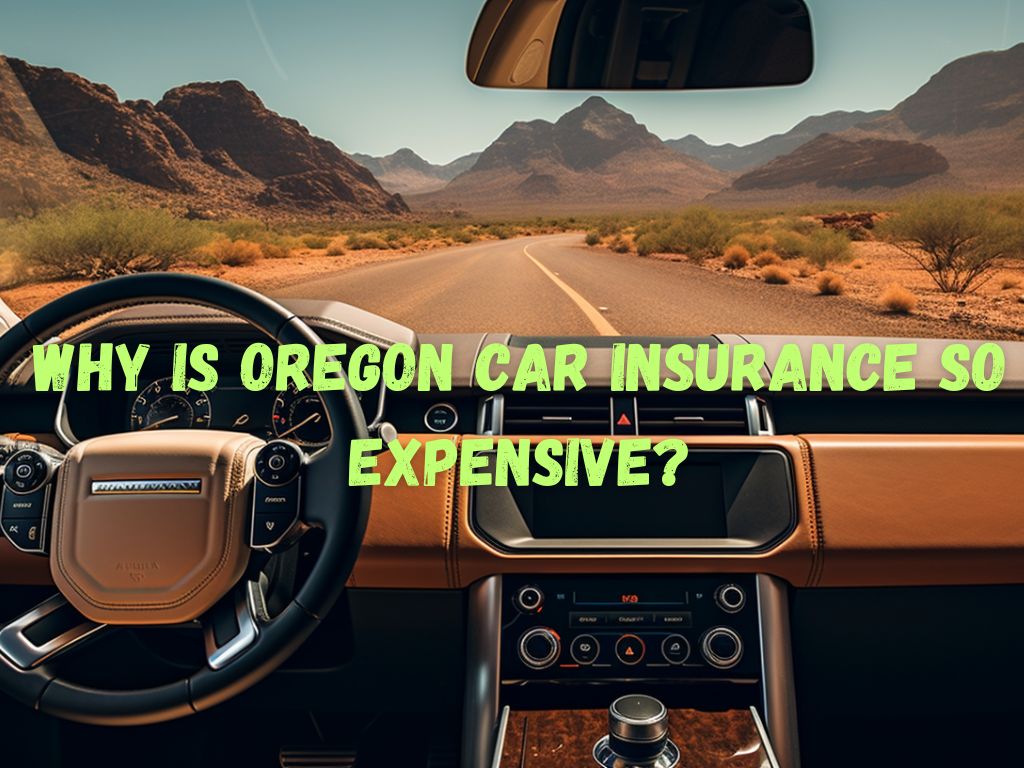If you live in Oregon, chances are that you have wondered why car insurance rates in your state are so high.
But, do you know why is Oregon car insurance so expensive? What are the actual reasons behind this phenomenon?
In this article, we will explore every factor that contributes to expensive car insurance in Oregon and ways to reduce your premium rates.
Oregon, known for its endless oceanic views and mountain ranges, ranks as the 27th most populous state in America with a population of 4.28 million.
Surprisingly, Oregon is the 16th most expensive state for car insurance. This means that Oregonians pay more than the national average rates for auto insurance.
Why is Oregon Car Insurance So Expensive? All the Influencing Factors
A. Motor Vehicle Theft Rates
Oregon’s vehicle theft rate is above the national average. According to the Federal Bureau of Investigation, Oregon has the 4th highest vehicle theft rate in the country.
Car theft can increase insurance rates on a state level. In Oregon, car theft can be more prevalent, raising insurance premiums.

B. State Minimum Insurance Requirements
Oregon has mandatory minimum insurance requirements that are higher than the average rates of neighboring states. State law requires all drivers to carry liability insurance, minimum coverage for uninsured and underinsured motorists, and personal injury protection.
Though these mandatory insurance requirements may protect the insurer from a consumer’s cost of loss, they result in higher insurance premiums.
C. Rising Costs of Vehicle Repairs
Increasingly advanced technology is a great reason as to why car insurance rates in Oregon are high. As new car models are introduced every year, newer, technology enables them that is more expensive to manufacture, including costly sensors, cameras, and advanced computer systems.
With more sophisticated vehicles, the cost of repairs and replacement is rising, and a claim of a few thousand dollars is not uncommon. Because of the these costs, car insurance premiums also rise as insurers count the cost of repairing the newer models of cars.
Comparison with Other States
A. Insurance Rates Comparison: Oregon vs. Neighboring States
- Oregonians pay an average of $1,646 for car insurance, which is $251 higher than the national average.
- Washington state’s average insurance rates stand around $1,319, making it significantly lower than Oregon’s rates.
- The disparity in insurance rates between Oregon and neighboring states is influenced by various factors.
B. Factors Affecting the Disparity
- Rates of car theft: Oregon has a higher car theft rate than neighboring states, leading to higher insurance premiums.
- Strict state laws: Oregon has mandatory insurance requirements that are higher than neighboring states, resulting in higher premiums.
C. Regional Differences and Varied Risk Factors
- Each state has its own unique risk factors, such as weather conditions, traffic congestion, and road infrastructure, which can impact insurance rates.
- While neighboring states may have similar geographic proximity, variations in risk factors contribute to differences in insurance rates.
D. Comparative Analysis and Considerations
- When comparing insurance rates between states, it’s important to consider factors like coverage limits, deductibles, and policy offerings to fully understand the value provided by the premiums.
- While Oregon’s rates may be higher, factors like comprehensive coverage options and the quality of insurance providers should also be considered.
E. Identifying Opportunities for Lowering Rates
- By understanding the reasons for the disparity in insurance rates, Oregonians can identify opportunities to mitigate costs, such as shopping around for competitive rates and taking advantage of discounts offered by insurance providers.
- Moving to a less populated area in Oregon or improving driving habits can also potentially lower insurance rates.

Ways to Mitigate Expensive Car Insurance
A. Shop Around for Competitive Rates
In Oregon, there are many insurance companies to choose from, so it’s quite possible consumers can get different coverage quotes. Prices for similar coverage can differ, sometimes significantly, between companies.
As such, it pays to compare rates from multiple Oregon car insurance providers to find competitive quotes.
B. Maintain a Good Driving Record
Good drivers can take advantage of their clean records by qualifying for better car insurance rates. Insurance companies take into account the age of the driver, the years of driving experience, and the history of road accidents before fixing the premium.
Oregonians with good driving habits can expect to pay lower rates compared to a driver with several traffic violations.
C. Consider Bundling Insurance Policies
Combining several insurance policies, such as renters’ insurance, homeowners’ insurance, and car insurance, could enable drivers to get better insurance rates.
Bundling insurance policies with one insurer may produce discounts and savings of up to 15% off your car insurance premium, depending on the provider.
D. Take Advantage of Available Discounts
Insurance companies in Oregon often provide drivers with different types of discounts that they can take advantage of. If a driver has anti-theft equipment installed, such as a car alarm or a GPS tracker, then he or she may qualify for a discount.
Other common discounts include good-student discounts, low-mileage discounts, and military discounts.
Frequently Asked Questions
How much does car insurance cost in Oregon on average?
The average cost of car insurance in Oregon is around $1,646 per year, compared to the national average of $1,395.

Which insurance companies offer affordable rates in Oregon?
The most affordable car insurers in Oregon include Progressive, State Farm, and USAA.
Will my car insurance rates decrease if I move to a less populated area in Oregon?
If moving to an area with lower population density, car insurance companies may reduce the insurance rates, as such areas are considered safer, with fewer chances of accidents.
Conclusion
Several factors drive car insurance prices in Oregon, including population density, high vehicle theft rates, state minimum insurance requirements, and advanced technology that hikes the cost of repairs and replacement.
However, there are ways drivers can mitigate high car insurance rates in Oregon, including shopping around for competitive rates, maintaining a good driving record, bundling policies, and taking advantage of available discounts.
Hopefully this article has provided insight and clarity into why car insurance rates in Oregon are so high and how drivers can get the most out of their insurance coverage.


 Tags:
Tags:










